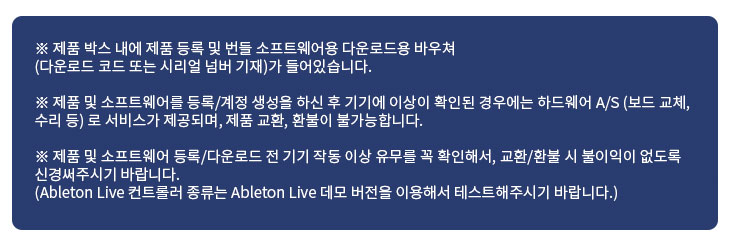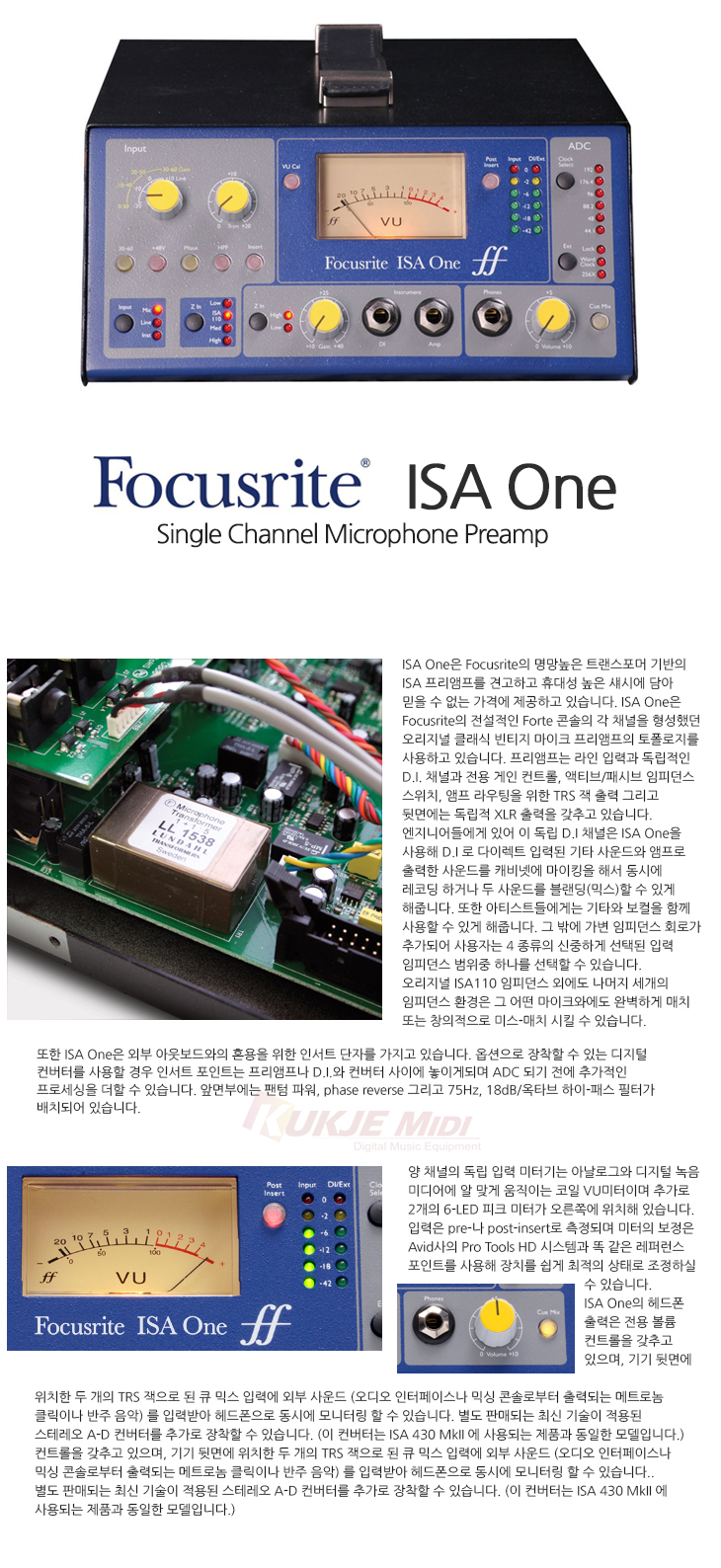



Specifications
We always quote 'real world' performance figures (measured to the AES17 standard). Some companies choose to quote chipset performance, which is misleading, and here's why.
Mic Input Response
Gain range = 0dB to 60dB in 10dB steps + 20 dB of variable gain
Input Impedance, variable as follows:
(Switched Impedance setting Equivalent Input Impedance at 1kHz)
Low = 600 Ohms
ISA110 = 1400 Ohms
Med = 2400 Ohms
High = 6800 Ohms
EIN (equivalent input noise) = -126dB measured at 60dB of gain with 150 Ohm terminating impedance and 22Hz/22kHz band-pass filter
Noise at main output with gain at unity (0dB) = -97dBu measured with a 22Hz/22kHz band-pass filter
Signal to noise ratio relative to max headroom (9dBu) = 106dB
THD at medium gain (30dB) = 0.0009% measured with a 1kHz -20dBu input signal and with a 22Hz/22kHz band-pass filter
Frequency response at minimum gain (0dB) = -0.5dB down at 10Hz and -3dB down at 125kHz
Frequency response at maximum gain (60dB) = -3dB down at 16Hz and -3dB down 118kHz
CMRR=98dB (Channel 1, 1kHz, maximum gain with +24 dBu input)
Crosstalk Channel to Channel: with 10dB@1kHz input to chA, chB output =104dBrA. With 10dB@10kHz input to chA, chB output = 84dBrA
Line Input Response
Gain range = -20dB to +10dB in 10dB steps + 20 dB of variable gain
Input Impedance = 10k? from 10Hz to 200kHz
Noise at main output with gain at unity (0dB) = -96dBu measured with a 22Hz/22kHz band-pass filter
Signal to noise ratio relative to max headroom (24dBu)=120dB
Signal to noise ratio relative to 0dBFS (+22dBu) = 118dB
THD at unity gain (0dB) = 0.001% measured with a 0dBu input signal and with a 22Hz/22kHz band-pass filter
Frequency Response at unity gain (0dB) = -0.3dB down at 10Hz and -3dB down at 200kHz
Instrument Input Response
Gain range = 10dB to 40dB continuously variable
Input Impedance:
High = greater than1M
Low =greater than 300k
Noise at minimum gain (+10dB) = -92dBu measured with a 22Hz/22kHz band-pass filter
Noise at maximum gain (+40dB) = -62dBu measured with a 22Hz/22kHz band-pass filter
THD at minimum gain (+10dB) = 0.001% measured with a 10dBu input signal and with a 22Hz/22kHz band-pass filter
Frequency Response at 10dB gain with -10dB input = 10Hz-100kHz +/- 0.6dB
Frequency Response at 40dB gain with -40dB input = -2.5dB down at 10Hz and 0dB at 100kHz
High Pass Filter
Roll off = 18dB per octave 3 pole filter
Fixed Frequency 75Hz measured at the 3dB down point
Meters
Moving coil (MC) meter is factory calibrated to 0VU = +4dBu with 1kHz sinewave. With the VU Cal button pressed the meter can be adjusted on the rear panel to allow 0VU to equal +10dBu to +26dBu with the centre detent being equal to +22dBu.
Peak LED meters calibrated in the detent position for 0dBFS = +22dBu, calibration is adjustable on the rear panel to allow 0dBFS to equal +10dBu to +26dBu
Routing for MC and Peak1 meter is after the HPF, pre insert send or switched post insert return. Peak2 is always pre ADC channel 2, which can be fed by external input or Instrument input.
LED levels are as follows when peak calibration is set to center detent on the rear panel. (This is when using the internal ADC).
0 = +22dBu
-2 = +20dBu
-6 = +16dBu
-12 = +10dBu
-18 = +4dBu
-42 = -20dBu
FRONT AND REAR CONNECTIVITY
Analogue Channel Inputs:
Mic input: XLR x 1
Line input: XLR x 1 and TRS x1
Instrument input TRS Jack: XLR x 1
External ADC input: TRS Jack x 1
Return: TRS Jack x 1
Analogue Channel Outputs:
Send: TRS Jack x 1
Balanced line output: XLR x 1
DI output: XLR x 1
DI through: TS Jack x 1
Analogue Channel Additional I/O:
Cue mix left input: TRS Jack x 1
Cue mix right input: TRS Jack x 1
Headphones output: ¼” TRS Jack x 1
Weight
3.9kg
8.6Ibs
Dimensions
220mm (W) x 104mm (H) x 254 - 290mm (D - top to bottom)
8.66' (W) x 4.1' (H) x 10' - 11.4' (D - top to bottom)
We always quote 'real world' performance figures (measured to the AES17 standard). Some companies choose to quote chipset performance, which is misleading, and here's why.
Mic Input Response
Gain range = 0dB to 60dB in 10dB steps + 20 dB of variable gain
Input Impedance, variable as follows:
(Switched Impedance setting Equivalent Input Impedance at 1kHz)
Low = 600 Ohms
ISA110 = 1400 Ohms
Med = 2400 Ohms
High = 6800 Ohms
EIN (equivalent input noise) = -126dB measured at 60dB of gain with 150 Ohm terminating impedance and 22Hz/22kHz band-pass filter
Noise at main output with gain at unity (0dB) = -97dBu measured with a 22Hz/22kHz band-pass filter
Signal to noise ratio relative to max headroom (9dBu) = 106dB
THD at medium gain (30dB) = 0.0009% measured with a 1kHz -20dBu input signal and with a 22Hz/22kHz band-pass filter
Frequency response at minimum gain (0dB) = -0.5dB down at 10Hz and -3dB down at 125kHz
Frequency response at maximum gain (60dB) = -3dB down at 16Hz and -3dB down 118kHz
CMRR=98dB (Channel 1, 1kHz, maximum gain with +24 dBu input)
Crosstalk Channel to Channel: with 10dB@1kHz input to chA, chB output =104dBrA. With 10dB@10kHz input to chA, chB output = 84dBrA
Line Input Response
Gain range = -20dB to +10dB in 10dB steps + 20 dB of variable gain
Input Impedance = 10k? from 10Hz to 200kHz
Noise at main output with gain at unity (0dB) = -96dBu measured with a 22Hz/22kHz band-pass filter
Signal to noise ratio relative to max headroom (24dBu)=120dB
Signal to noise ratio relative to 0dBFS (+22dBu) = 118dB
THD at unity gain (0dB) = 0.001% measured with a 0dBu input signal and with a 22Hz/22kHz band-pass filter
Frequency Response at unity gain (0dB) = -0.3dB down at 10Hz and -3dB down at 200kHz
Instrument Input Response
Gain range = 10dB to 40dB continuously variable
Input Impedance:
High = greater than1M
Low =greater than 300k
Noise at minimum gain (+10dB) = -92dBu measured with a 22Hz/22kHz band-pass filter
Noise at maximum gain (+40dB) = -62dBu measured with a 22Hz/22kHz band-pass filter
THD at minimum gain (+10dB) = 0.001% measured with a 10dBu input signal and with a 22Hz/22kHz band-pass filter
Frequency Response at 10dB gain with -10dB input = 10Hz-100kHz +/- 0.6dB
Frequency Response at 40dB gain with -40dB input = -2.5dB down at 10Hz and 0dB at 100kHz
High Pass Filter
Roll off = 18dB per octave 3 pole filter
Fixed Frequency 75Hz measured at the 3dB down point
Meters
Moving coil (MC) meter is factory calibrated to 0VU = +4dBu with 1kHz sinewave. With the VU Cal button pressed the meter can be adjusted on the rear panel to allow 0VU to equal +10dBu to +26dBu with the centre detent being equal to +22dBu.
Peak LED meters calibrated in the detent position for 0dBFS = +22dBu, calibration is adjustable on the rear panel to allow 0dBFS to equal +10dBu to +26dBu
Routing for MC and Peak1 meter is after the HPF, pre insert send or switched post insert return. Peak2 is always pre ADC channel 2, which can be fed by external input or Instrument input.
LED levels are as follows when peak calibration is set to center detent on the rear panel. (This is when using the internal ADC).
0 = +22dBu
-2 = +20dBu
-6 = +16dBu
-12 = +10dBu
-18 = +4dBu
-42 = -20dBu
FRONT AND REAR CONNECTIVITY
Analogue Channel Inputs:
Mic input: XLR x 1
Line input: XLR x 1 and TRS x1
Instrument input TRS Jack: XLR x 1
External ADC input: TRS Jack x 1
Return: TRS Jack x 1
Analogue Channel Outputs:
Send: TRS Jack x 1
Balanced line output: XLR x 1
DI output: XLR x 1
DI through: TS Jack x 1
Analogue Channel Additional I/O:
Cue mix left input: TRS Jack x 1
Cue mix right input: TRS Jack x 1
Headphones output: ¼” TRS Jack x 1
Weight
3.9kg
8.6Ibs
Dimensions
220mm (W) x 104mm (H) x 254 - 290mm (D - top to bottom)
8.66' (W) x 4.1' (H) x 10' - 11.4' (D - top to bottom)